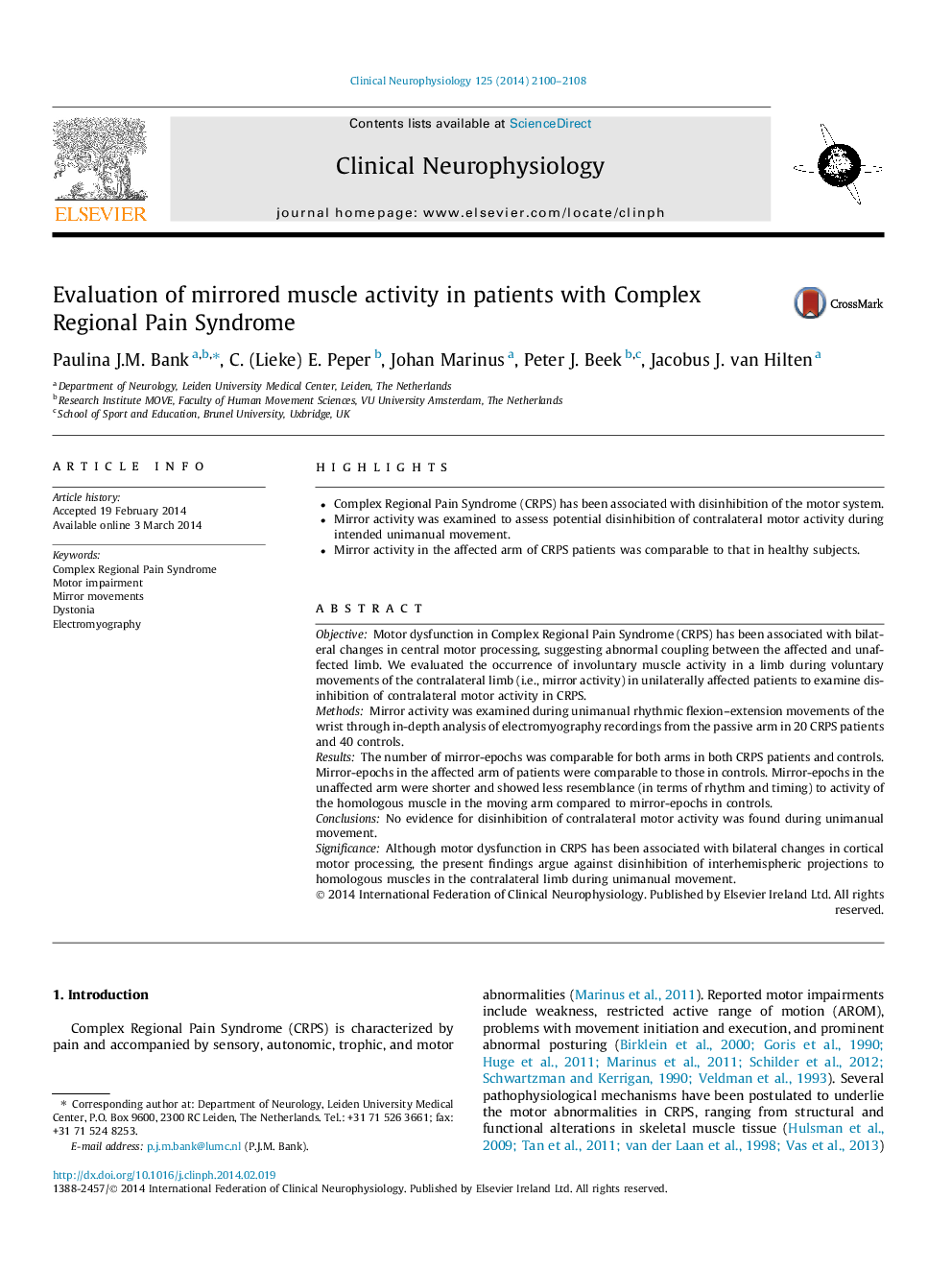| Article ID | Journal | Published Year | Pages | File Type |
|---|---|---|---|---|
| 3042711 | Clinical Neurophysiology | 2014 | 9 Pages |
•Complex Regional Pain Syndrome (CRPS) has been associated with disinhibition of the motor system.•Mirror activity was examined to assess potential disinhibition of contralateral motor activity during intended unimanual movement.•Mirror activity in the affected arm of CRPS patients was comparable to that in healthy subjects.
ObjectiveMotor dysfunction in Complex Regional Pain Syndrome (CRPS) has been associated with bilateral changes in central motor processing, suggesting abnormal coupling between the affected and unaffected limb. We evaluated the occurrence of involuntary muscle activity in a limb during voluntary movements of the contralateral limb (i.e., mirror activity) in unilaterally affected patients to examine disinhibition of contralateral motor activity in CRPS.MethodsMirror activity was examined during unimanual rhythmic flexion–extension movements of the wrist through in-depth analysis of electromyography recordings from the passive arm in 20 CRPS patients and 40 controls.ResultsThe number of mirror-epochs was comparable for both arms in both CRPS patients and controls. Mirror-epochs in the affected arm of patients were comparable to those in controls. Mirror-epochs in the unaffected arm were shorter and showed less resemblance (in terms of rhythm and timing) to activity of the homologous muscle in the moving arm compared to mirror-epochs in controls.ConclusionsNo evidence for disinhibition of contralateral motor activity was found during unimanual movement.SignificanceAlthough motor dysfunction in CRPS has been associated with bilateral changes in cortical motor processing, the present findings argue against disinhibition of interhemispheric projections to homologous muscles in the contralateral limb during unimanual movement.
